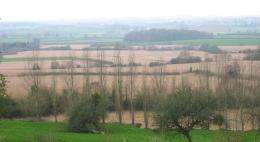Perennial energy crops could be good for carbon savings and for wildlife

Growing the energy crops short rotation coppice (SRC) willow and miscanthus grass could help the UK to reduce carbon emissions and benefit wildlife, according to researchers from the UK Research Councils’ Rural Economy and Land Use Programme.
Dr Angela Karp at Rothamsted Research led an interdisciplinary team from the universities of East Anglia and Exeter, the Game and Wildlife Conservation Trust and the Centre for Ecology and Hydrology, in a major research project to identify the effects of increasing the amount of land used to grow these new crops. Their calculations suggest that planting biomass crops to generate electricity does lead to net savings in greenhouse gases, compared with current emissions.
SRC willow and miscanthus are already grown over c17,000 hectares in the UK to provide electricity and heat. Government policies aim to encourage up to around one million hectares, some of which could also be processed into transport fuels. But concerns have been raised about the likely effects on farmland biodiversity, water resources and familiar landscapes, as well as the pressures on land used for growing food crops.
The researchers found that the SRC willow in particular actually had positive effects for butterflies, some invertebrates and most bird species. Looking at water usage, they found that SRC willow is similar to cereal crops, while miscanthus is more comparable to woodlands.
The team also consulted members of the public about the changes to landscape appearance that would result from growing these novel crops, using virtual-reality computer simulations. Most people showed little concern about the aesthetic effects of the planting, although some expressed worries about lorry movements and processing units.
Dr Angela Karp said: “Fields of SRC willow and the exotic grass miscanthus are still quite unfamiliar in the UK countryside and it is important to look at all the implications of increasing the hectarage.
“Our results suggest that there is definite potential for growing more of them, without negative effects, although we do find that sensitive plantation design would be beneficial, both for wildlife and for aesthetic impact.
“One of the outcomes from our project is detailed mapping across England, which identifies areas which could be suitable for growing energy crops. This shows that we could meet government objectives of growing 350,000 hectares of these for electricity without impacting on food production. However, to meet an additional 750,000 for transport fuels would increase pressure on available land.”
Provided by Newcastle University
















